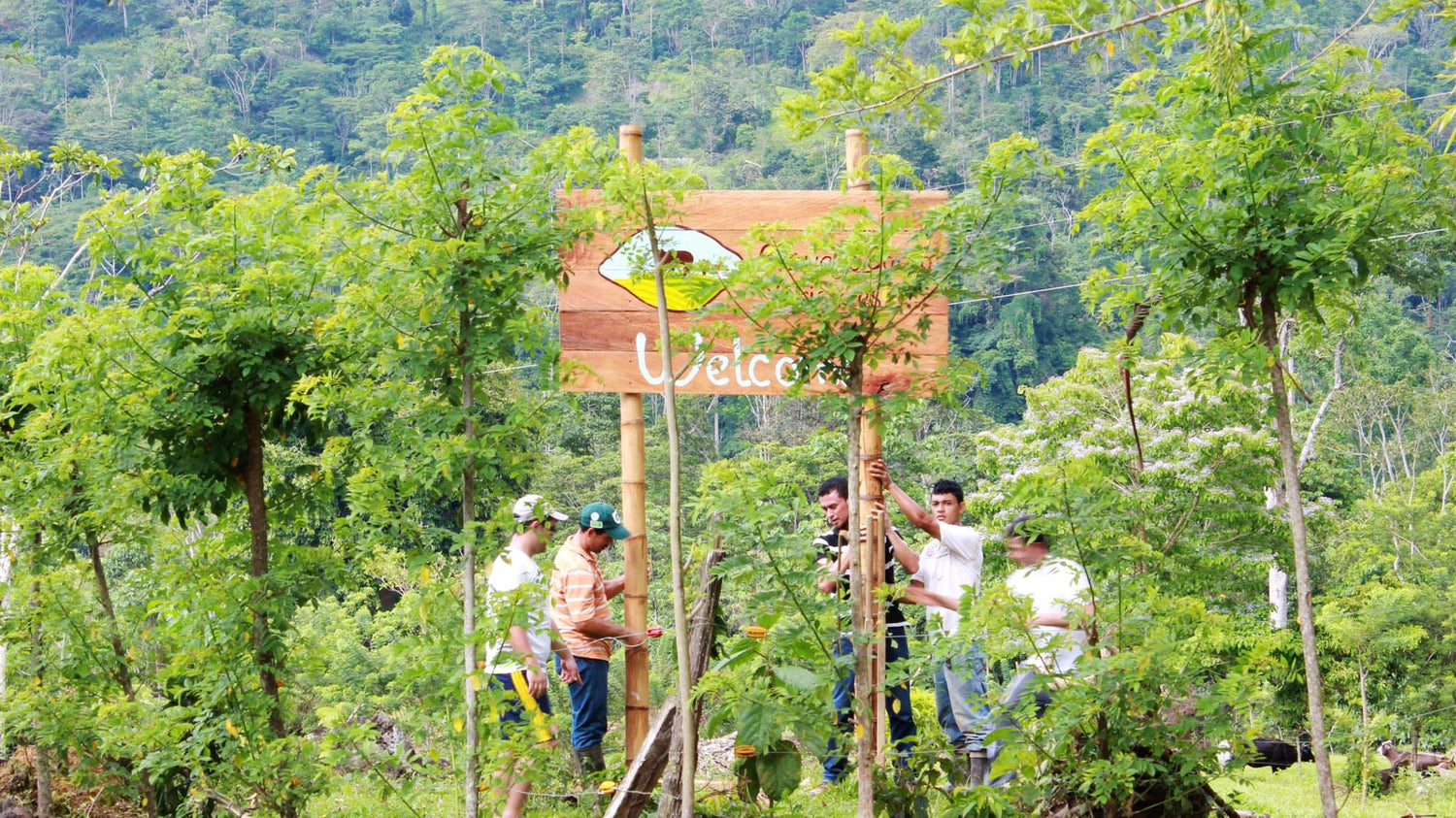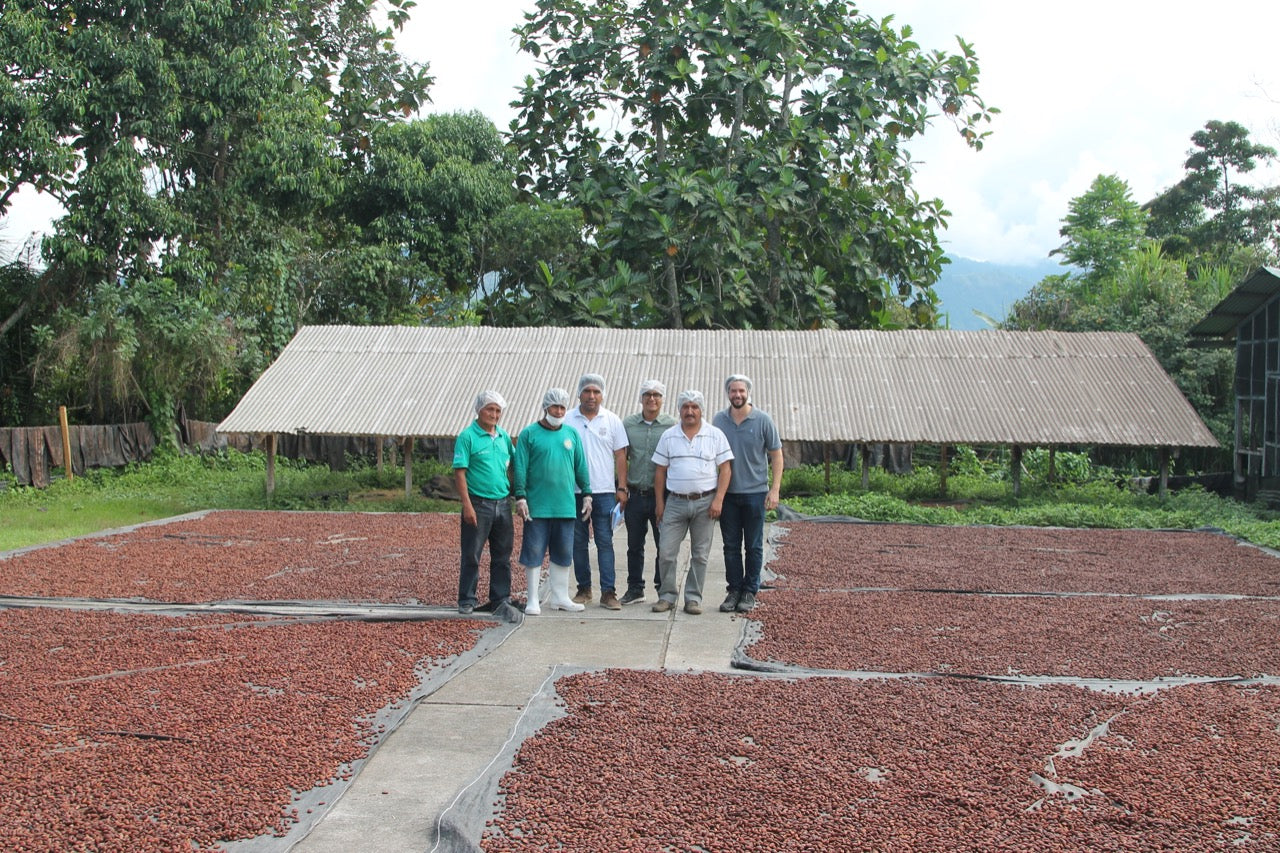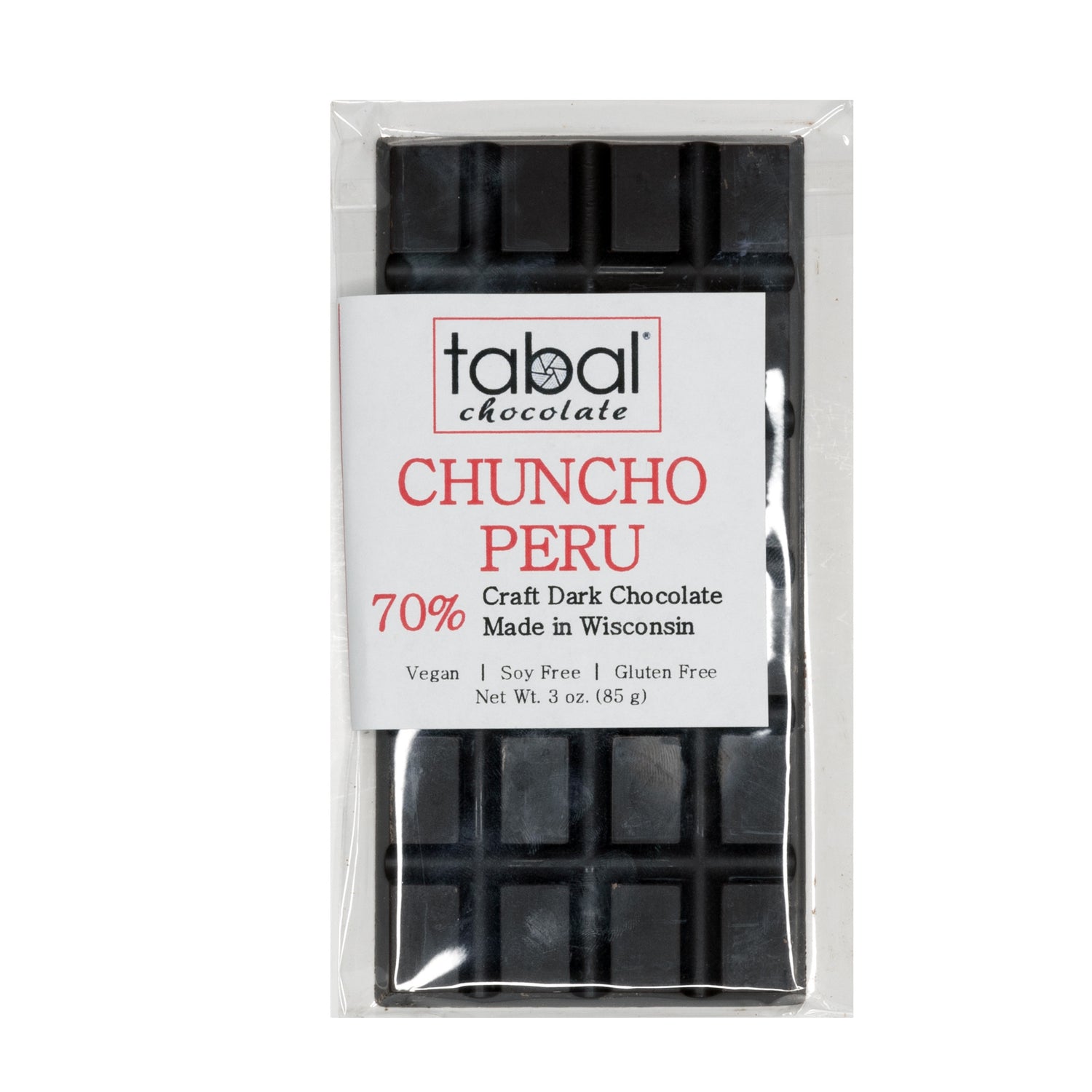CHUNCHO, PERU 70%
No se pudo cargar la disponibilidad de recogida
Descripción
CHUNCHO, PERU 70%
We chose this cacao to make into single origin chocolate because of it's amazing flavor and quality. Equally as important is the fact that we wanted to celebrate and support cacao farmers who are women and to promote gender equity on farms. Below are some of the details about this unique Chuncho cacao that we wanted to share with all of you, so you can appreciate the time and commitment of these amazing farmers!
Origin: Chuncho, Peru
Tasting notes: Complex fruit flavor
Ingredients: Single source organic cacao, organic cane sugar
Organically grown * Direct Trade * Gluten Free * Dairy Free * Soy Free * Vegan
Nutrition facts: Serving size: 1.5oz. Calories: 280. Fat: 19g (29%). Cholesterol: 0mg (0%). Carbs: 23g (8%). Fiber: 3g (14%). Sugar: 14g
*All our chocolate may contain traces of nuts, tree nuts, peanuts, dairy, flour, and soy.
CHUNCHO, PERU
- The Chuncho beans come mainly from the Cuzco department.
- The Chuncho beans are harvested at altitudes that range from about 400m to 1200m above sea level
- Chuncho is native to Cuzco department (and also some to the VRAE region) and has been classified as its own genetic variety… however please note that there are many Chunchos. As of right now there seems to be 7 classifications for Chuncho, but many more suspected of falling under the “Chuncho umbrella” are being analyzed and we believe in the near future their will be more identified into as Chuncho varieties.
- From an academic perspective Chuncho is very sought after, mainly because of its genetic isolation it has had in this region. University of Urubamba is doing these studies currently.
- It typically has a high diverse fruit flavor profile, higher % of fat than usual, and lower % of tannins.
- They tend to be a smaller pod and smaller bean, however there are Chunchos that are bigger also. With this said, the cacao pods also vary in size and in color. Most tend to be small… but some are bigger. And colors of pods vary between yellow, green and rose.
- Historically (going back hundreds of years to pre colonizing times), Cuzco has been the region that has had the highest production of cacao in Peru. After colonization and commercialization of cacao in the Jungle departments (north of Peru: Amazonas, San Martin, Huánuco), Cuzco has fallen in the production scale compared to the other departments (mainly because the other departments have scaled up dramatically their productions [as an alternative to coca plant harvesting])
- The zone in Cuzco where cacao was traditionally from is the Urubamba valley… a very special valley. This is the main valley where the Incas would come from the Andes to reach the jungle…this was their route into the jungle. It was also where they would meet the natives of the jungle for trade purposes. (This is also the Valley where the last Incan emperor (Manco Inca) fled to and hid when the conquistadors invaded Peru)

Ethically Sourced
Maintaining Relationships
We maintain close relationships with 165 farmers through technical training, in agronomic practices and organic certification. Learn more about how chocolate is made.

FAQ section
Show frequently asked questions with answers and pair with image.
Do you ship to my country?
Yes. We ship orders worldwide. See more information from other shipping related FAQ questions.
Do you make the chocolate by hand?
Yes. Once the beans arrive at Tabal Chocolates we sort, roast, crack and winnow, grid, conch or aerate, temper, pour into molds, then wrap each bar by hand.
Where do you get the cocoa beans?
We get the beans through our communities in the Dominican Republic, Costa Rica, Columbia, Nicaragua, and Peru.
Do you do wholesale?
Yes. We do.















